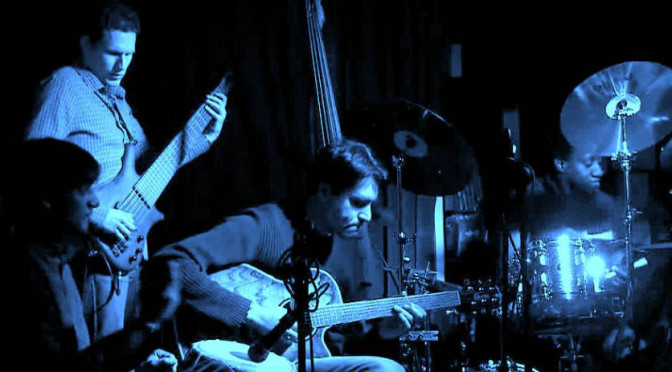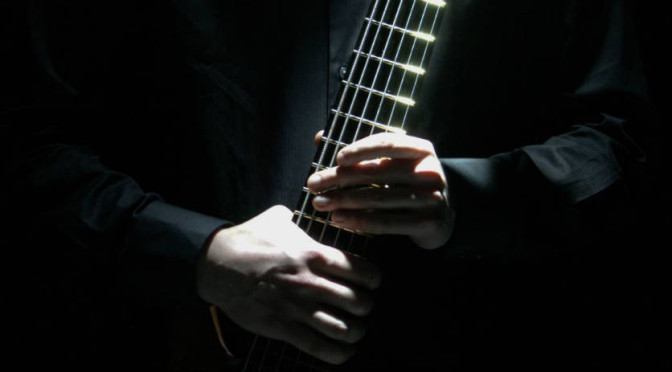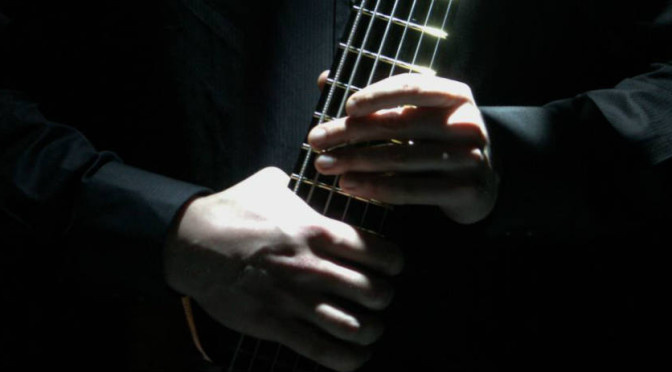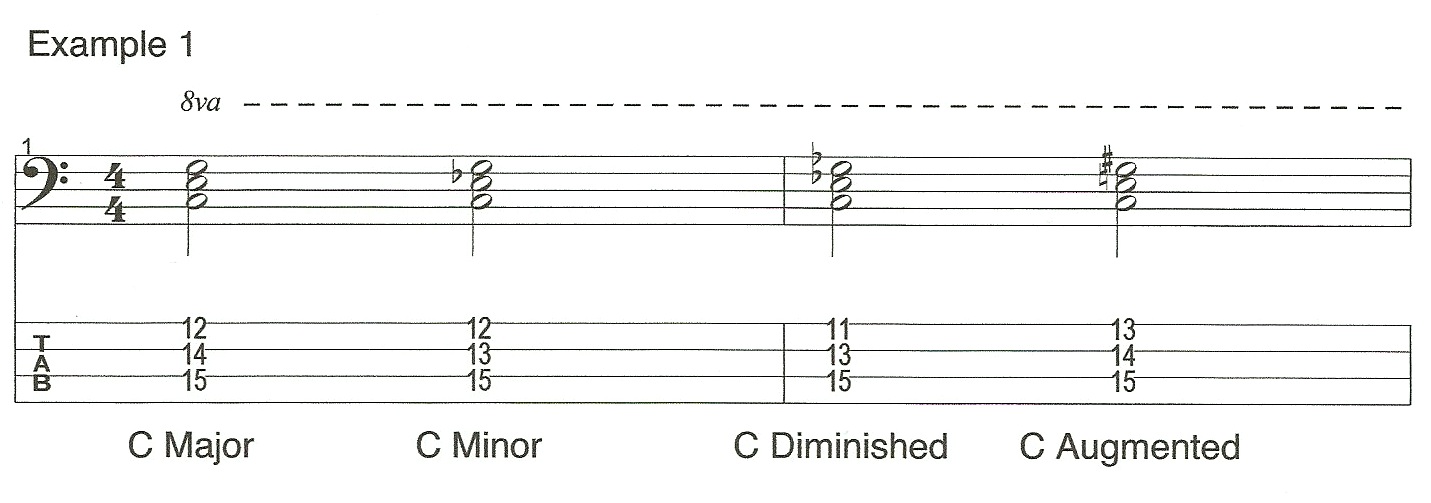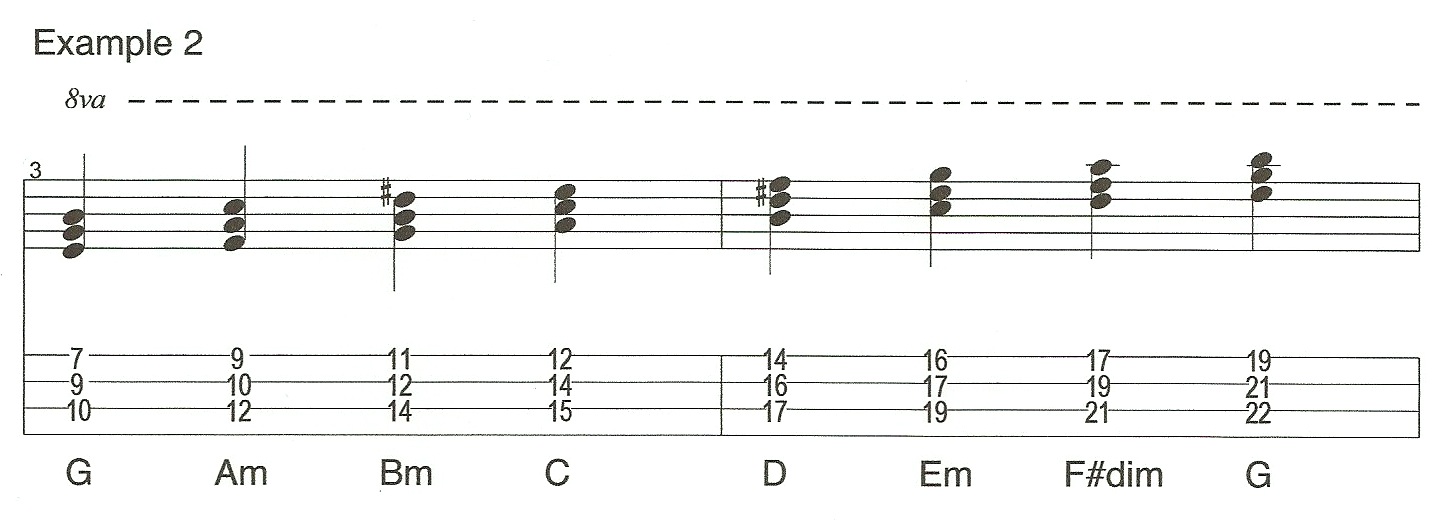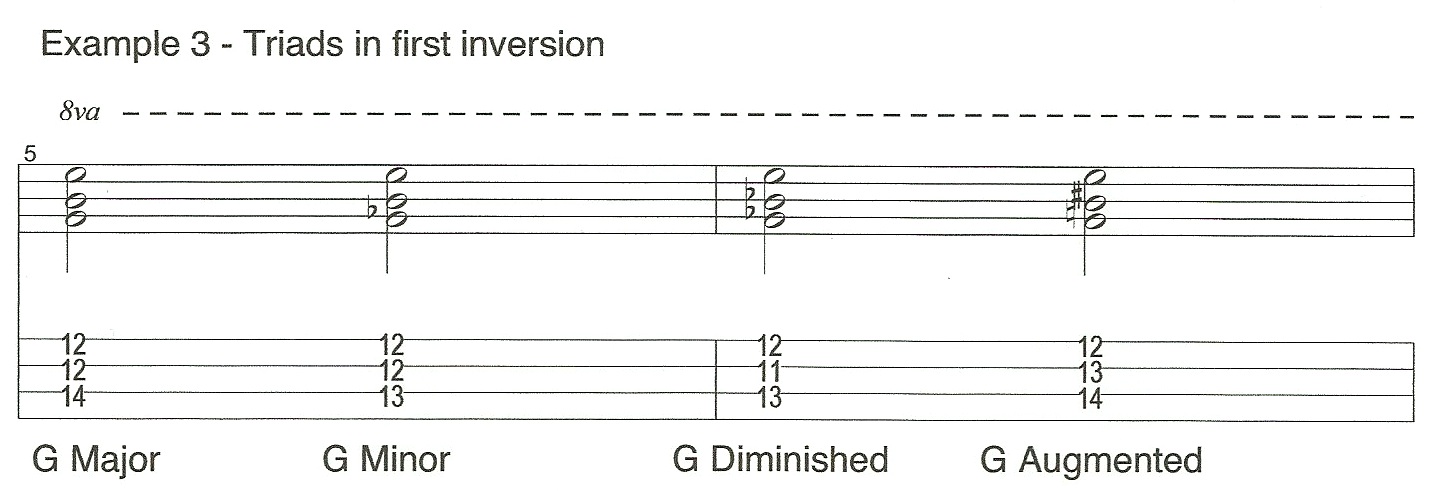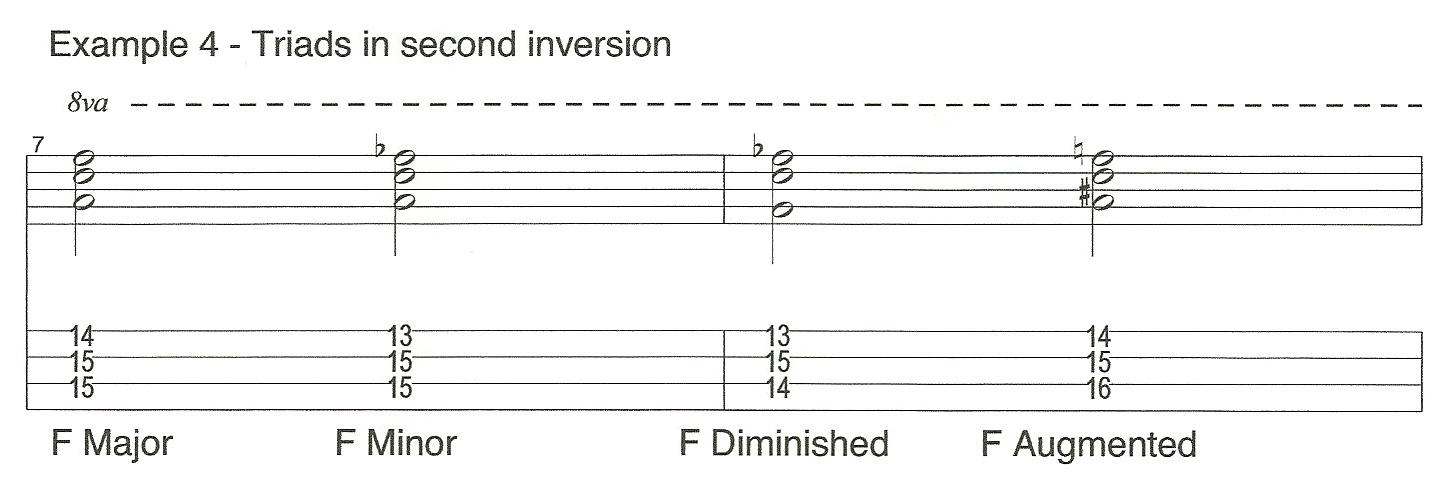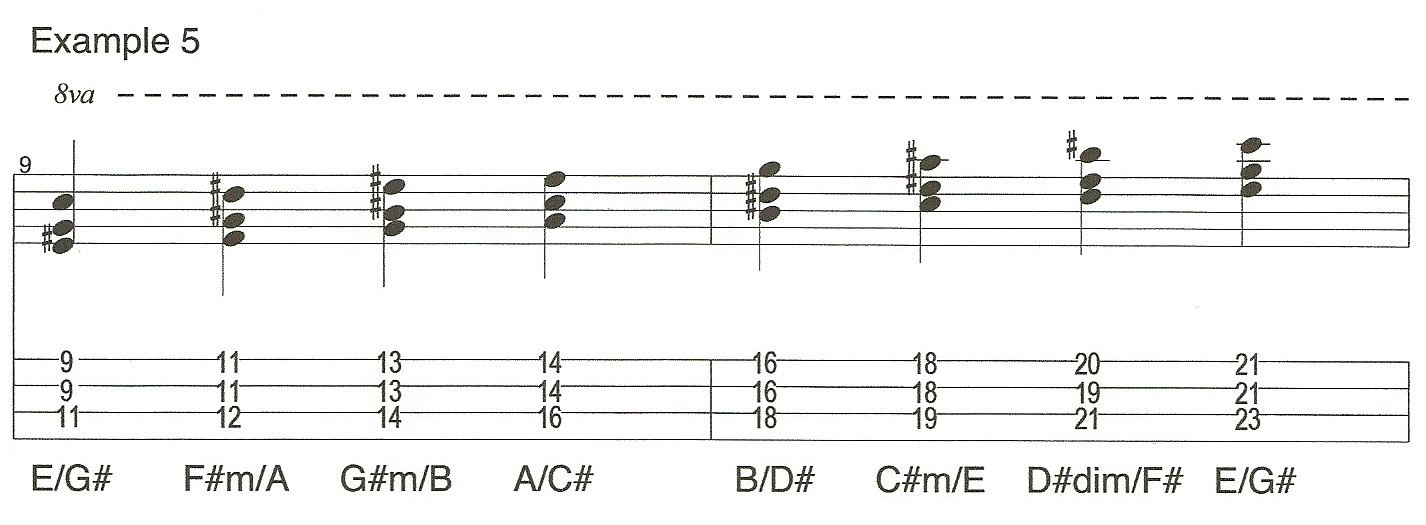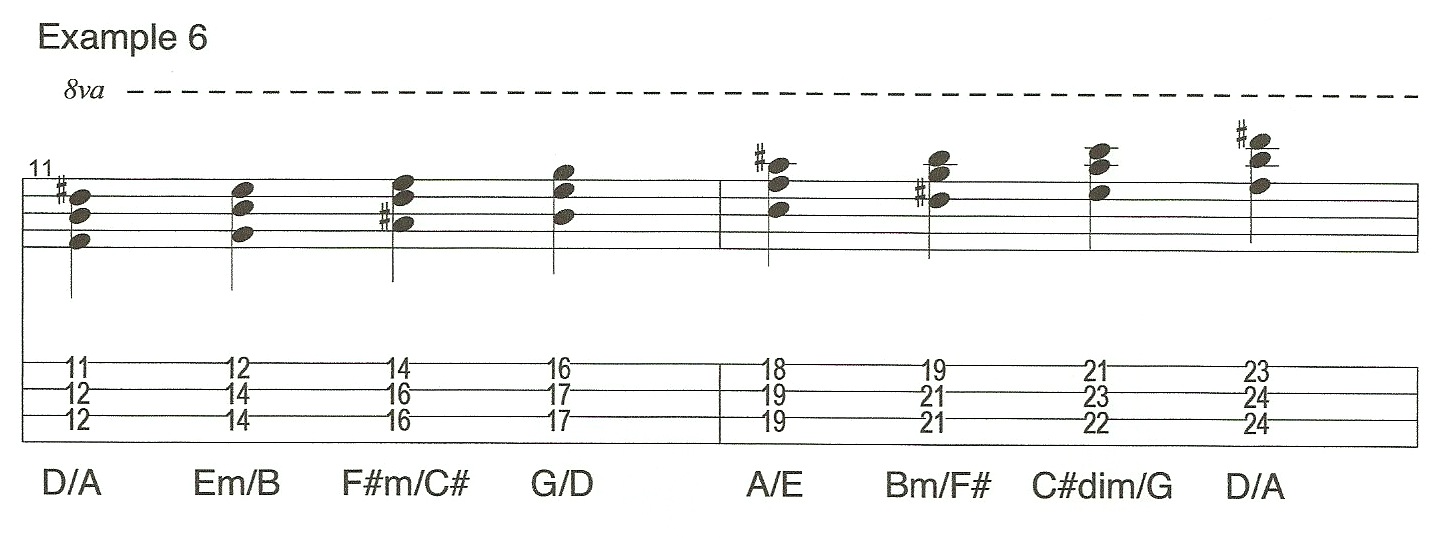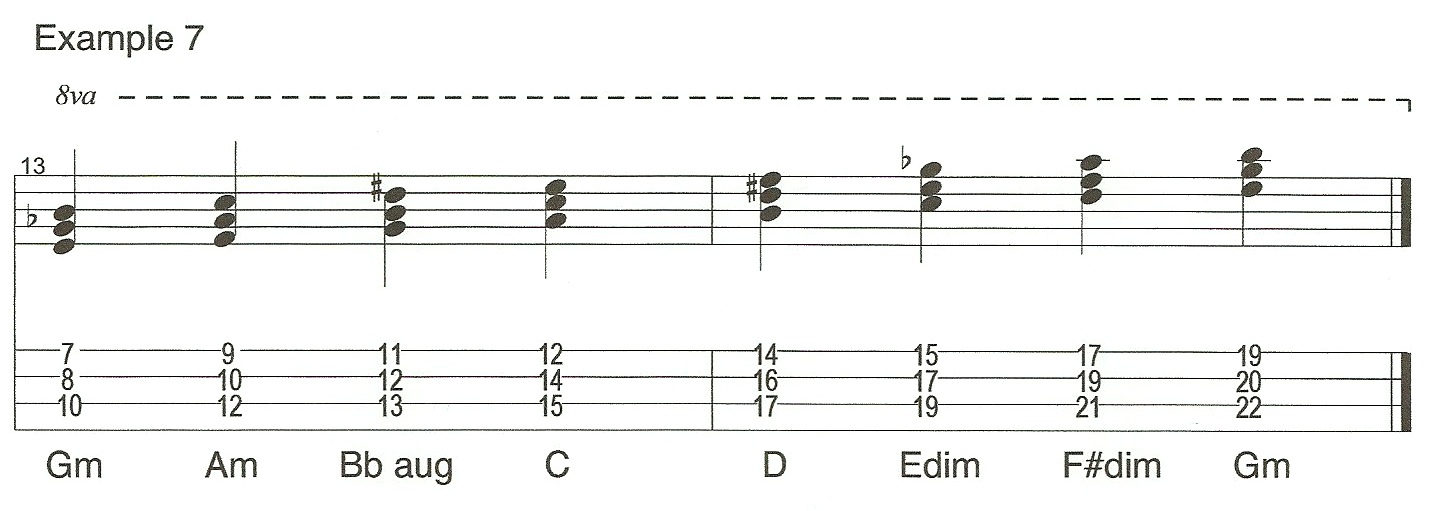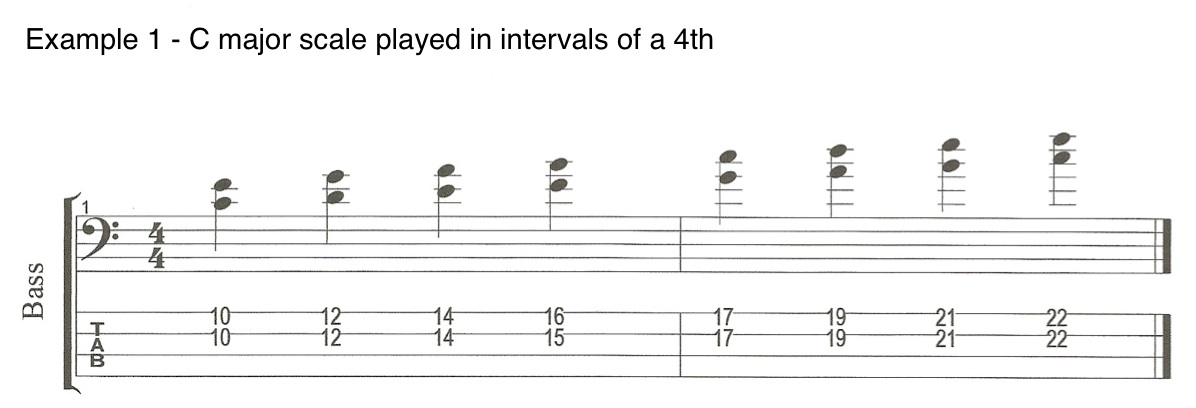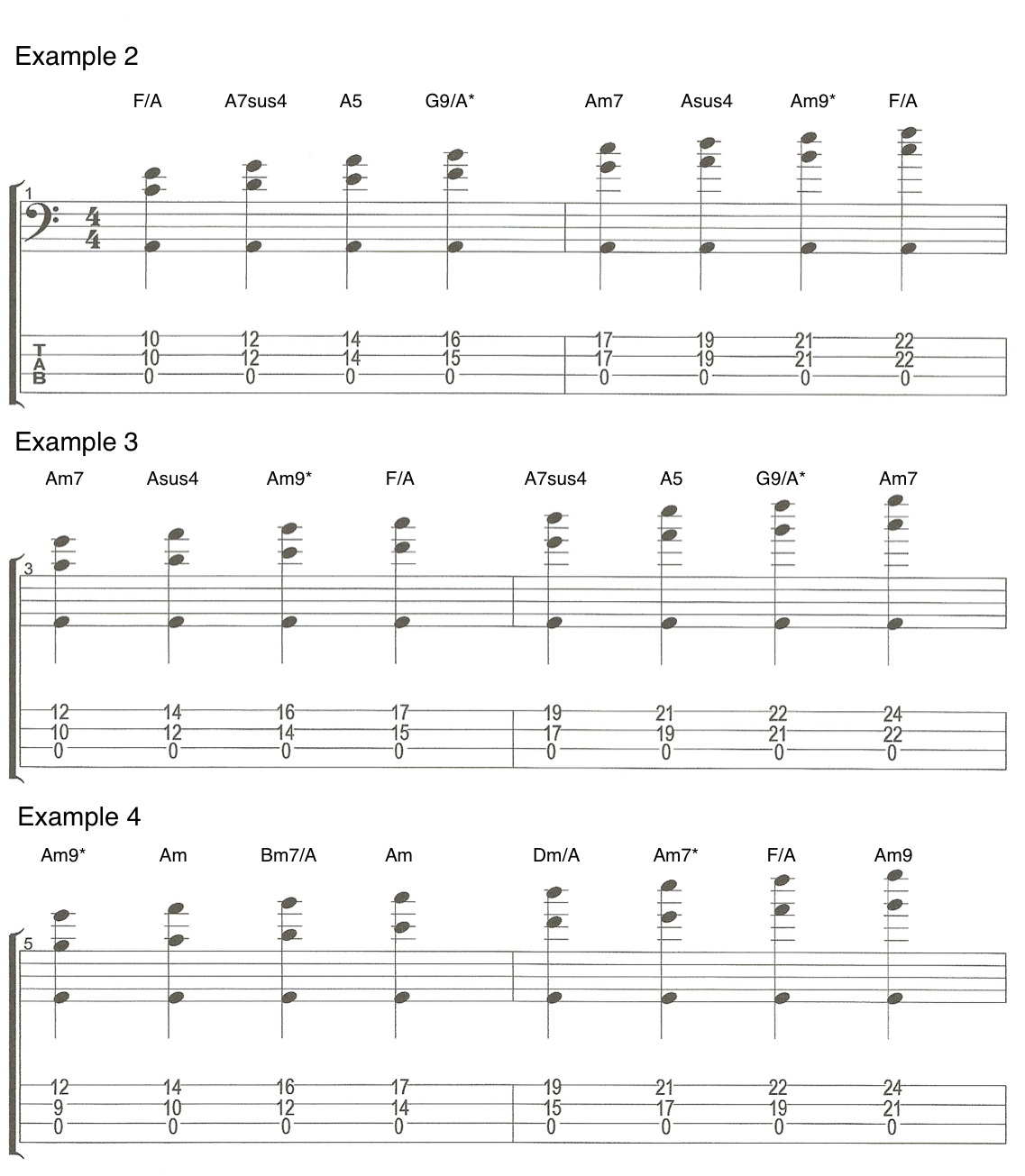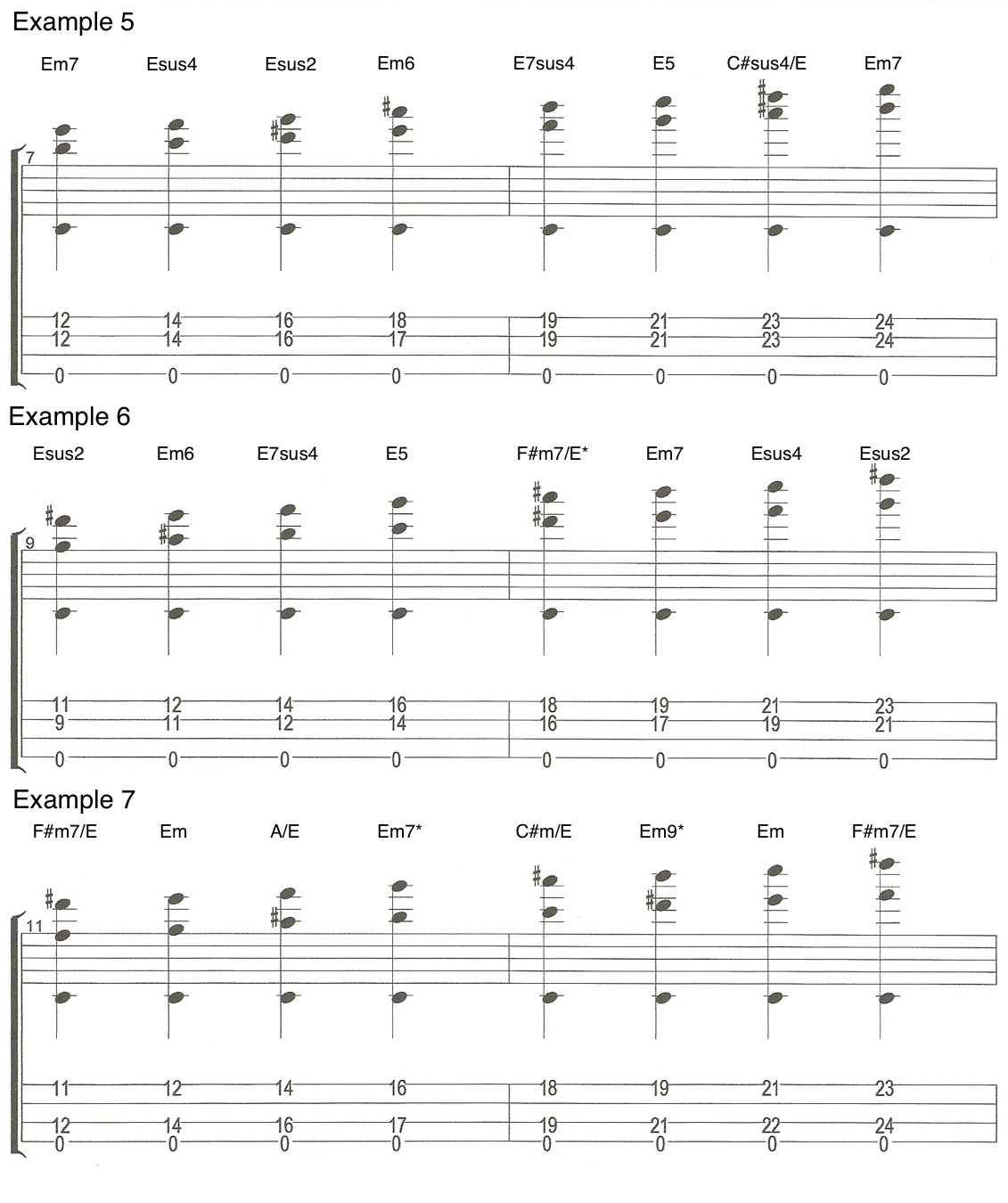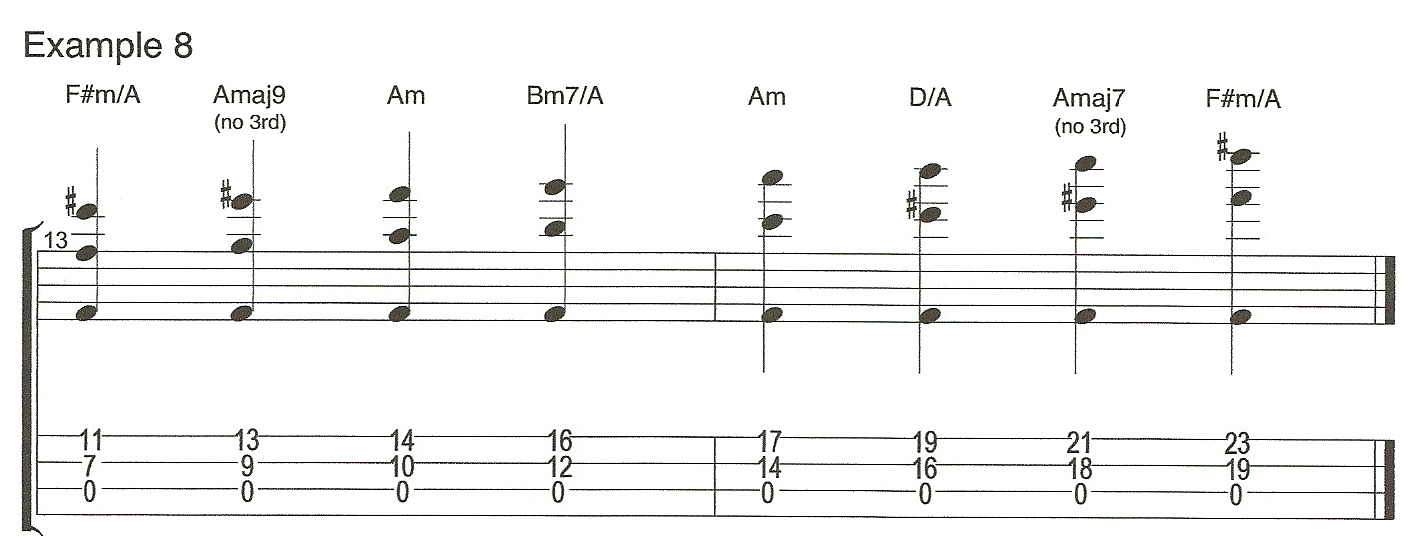Chord Extensions on 4, 5 & 6 String Bass Guitars – Bass Practice Diary – 25th September 2018
I’ve done a few videos in the past about playing chords on the bass. This week I’m demonstrating a fairly simple approach you can use to playing jazz chord extensions. The system involves using two different voicings of 7th chords. Each using three notes, root, 3rd and 7th. Then adding chord extensions like 9ths, 11ths and 13ths as well as common alterations.
A Very Quick Guide to Jazz Harmony – 7th Chords
Chord extensions and alterations are synonymous with jazz harmony. 7th chords form the foundation of most jazz chords and I’m going to look at the three most common types of 7th chord. They are Major 7th, Minor 7th and Dominant 7th.
7th chords are four note chords, all of the chord types mentioned above contain root, 3rd, 5th and 7th. The root and 5th are the same in all three chord types, so the 7th chords are defined by the thirds and sevenths. Major 7th chords have a major 3rds and 7ths. Minor 7th chords have minor 3rds and 7ths and dominant 7th chords have major thirds and minor 7ths.
There are other types of 7th chords, but in this post I’m only going to look at these three types because they’re the most common.
When voicing extended chords it’s extremely important to know which notes to leave out. Regardless of whether you play 4, 5 or 6 string basses, you only have a finite number of strings. I recommend that you don’t try to cram every note from an extended chord into a chord voicing. It’s rarely a useful or practical approach.
The first note to leave out is the 5th, because it’s the same in each chord type. It doesn’t tell you anything about the chord. So, when I voice 7th chords, I voice them as three note chords, root, 3rd and 7th.
Assuming that you keep the root as the lowest note, that means you can voice a 7th chord in two different ways. The first way is with the 7th on top, as demonstrated in the three diagrams below.
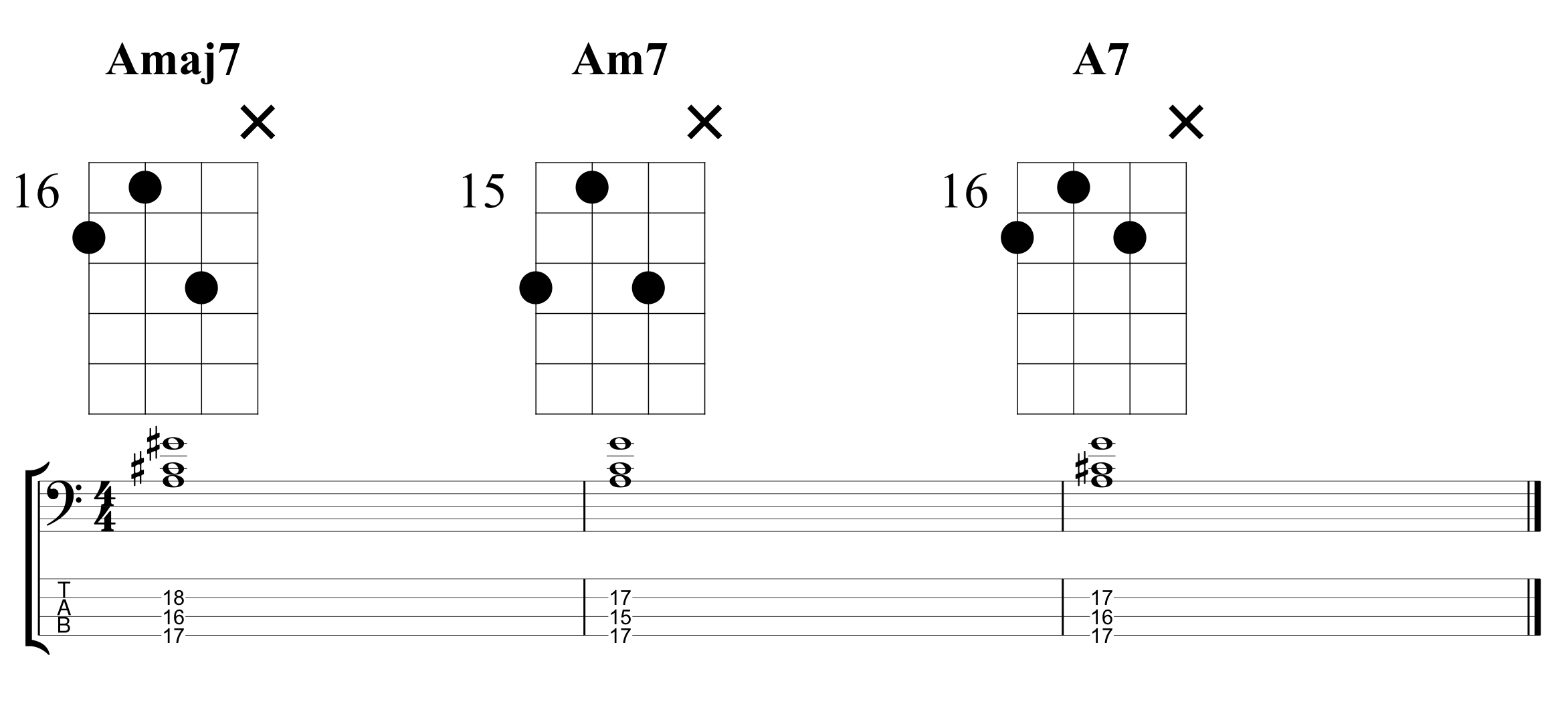
9th Chords
The reason that I’ve voiced these chords on the 2nd, 3rd and 4th strings is so that I can use the first string to add a chord extension. These voicings work well for 9th chords. The 9th above my root note A is the note B played on the 16th fret of the first string. You can add this note to each of the chord types and you get these chord voicings.
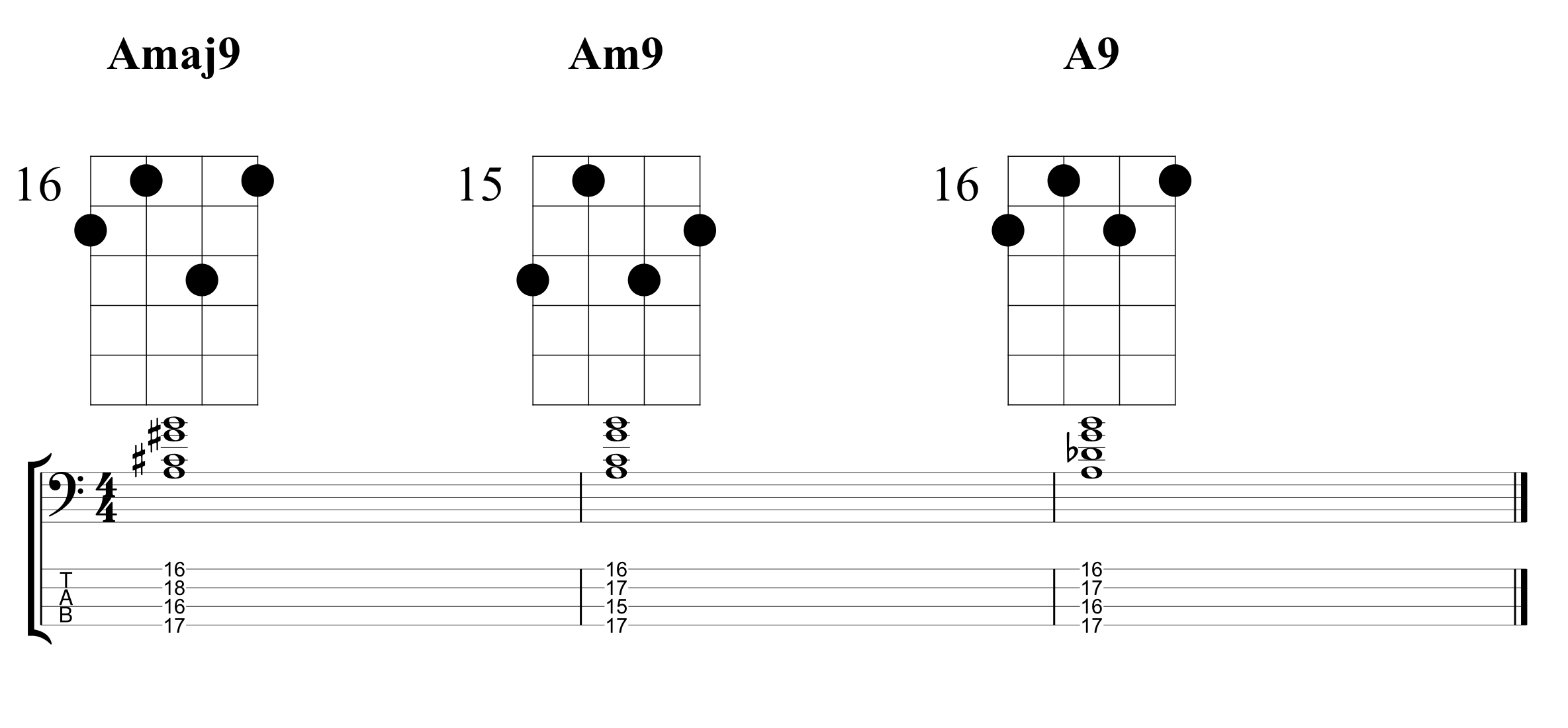
There are two alterations you can make to the 9th in the dominant 9th chord. You can sharpen it to make an A7#9 chord or you can flatten it to make an A7b9 chord.
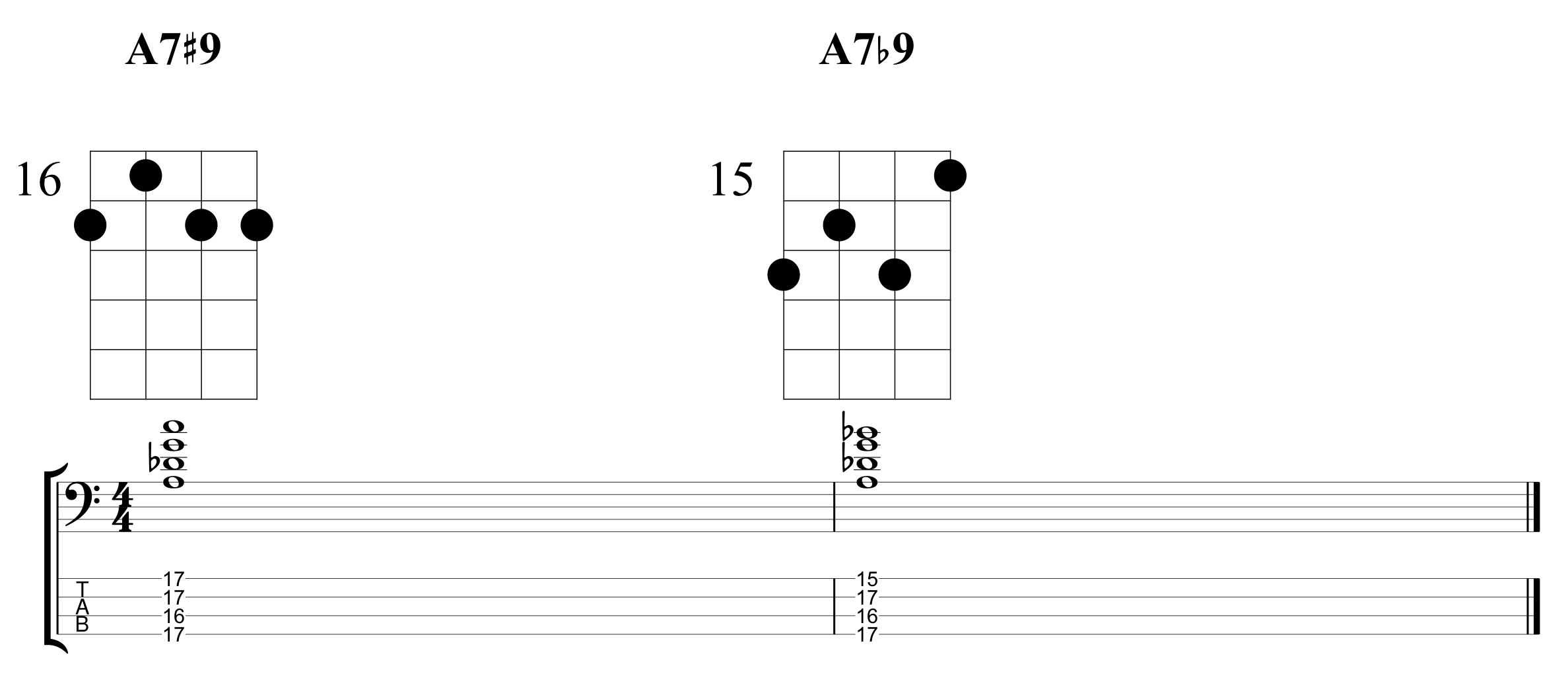
Voicing 7th Chords With the Third on Top
I stated previously that there were two ways I was going to voice the 7th chords. The first was with the 7th on top. Now I’m going to make the 3rd the highest note. I’ll play the root and 7th in the same place, but I’ll move the third up an octave, from the third string onto the first string.
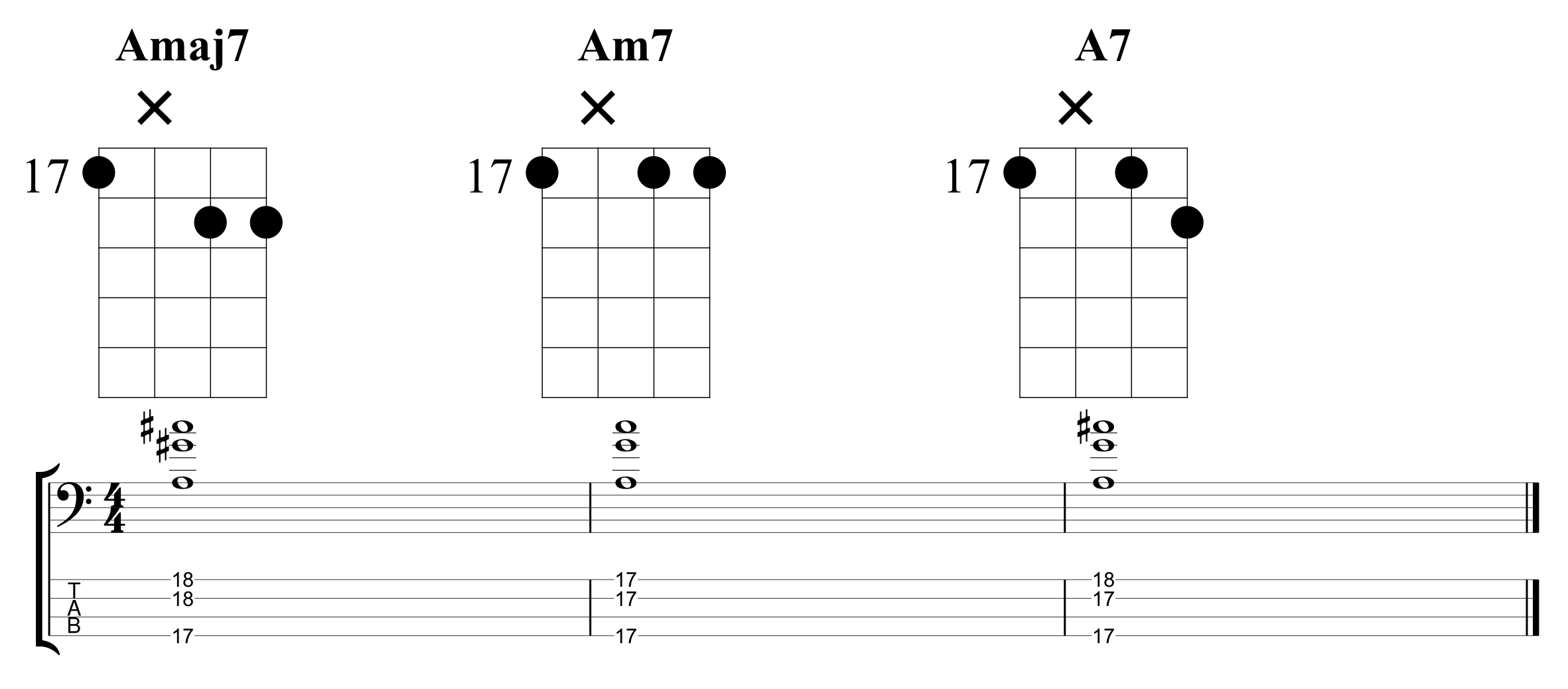
11th Chords
In these voicings the 3rd string is not being used. So I can add a chord extension to the 3rd string. An obvious one to use is an 11th, because it sits comfortably in these chord shapes.
The natural 11th sounds good in a minor 7th chord. But, it doesn’t work so well on chords with major 3rds. So, for the major 7th chord I’ll add a sharpened 11th, which creates a lydian sound.
The sharpened 11th also works well on the dominant and minor 7th chords, and in these cases the sharpened 11th can also be described as a flattened 5th. So, I can create four new voicings by adding either a sharp or natural 11th to the 3rd string.
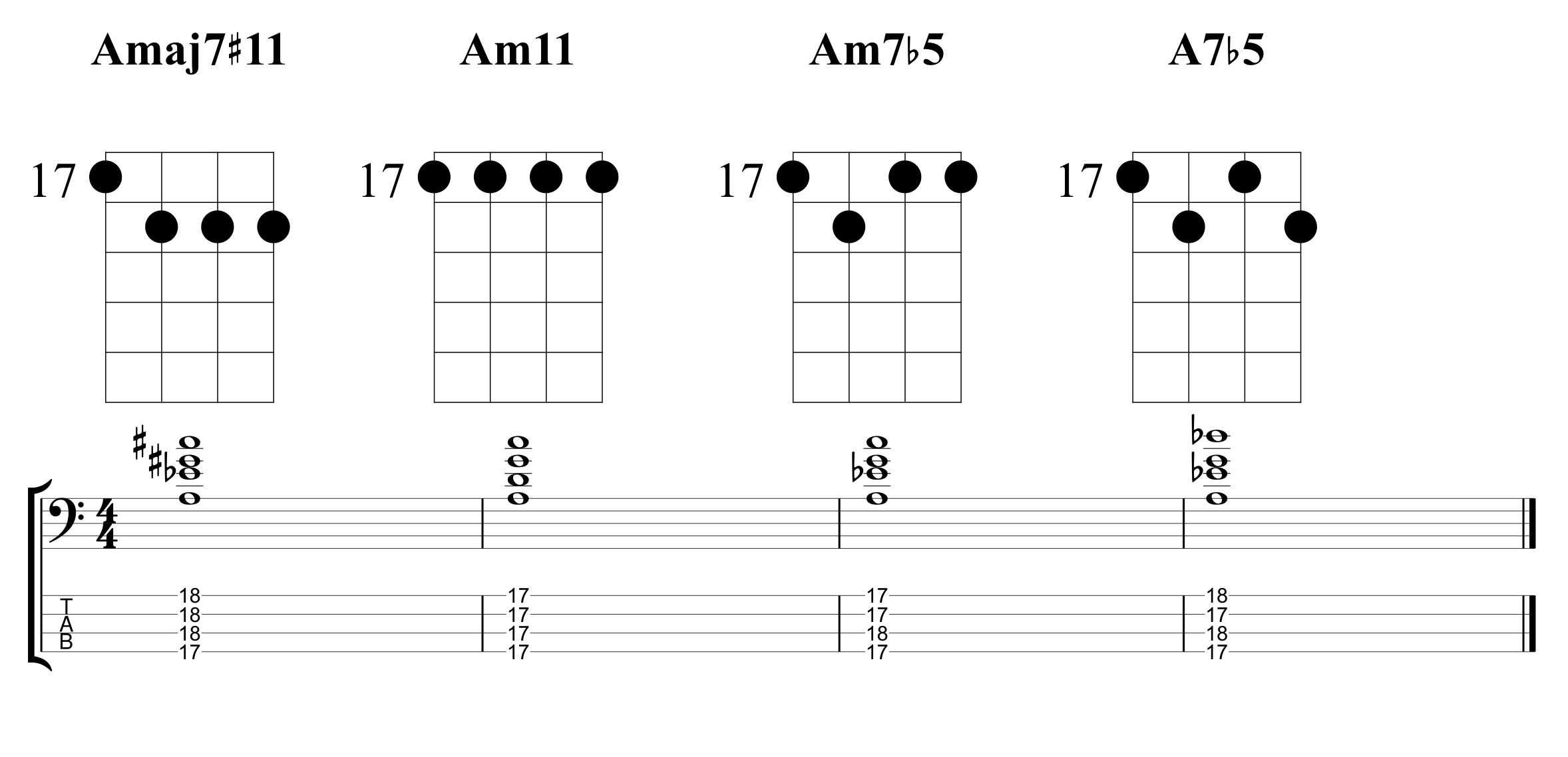
Chord Voicings for 5 String and 6 String Bass
All the voicings I’ve played so far can be played on 4 string bass. However, more strings means more potential chord voicings so I’m going to look at some voicings that will only work on 5 and 6 string basses.
First I’m going to take a couple of the 11th chords from the previous examples, and move the 11th up one octave. So, in the following voicings the 11th is the top note above the 3rd.
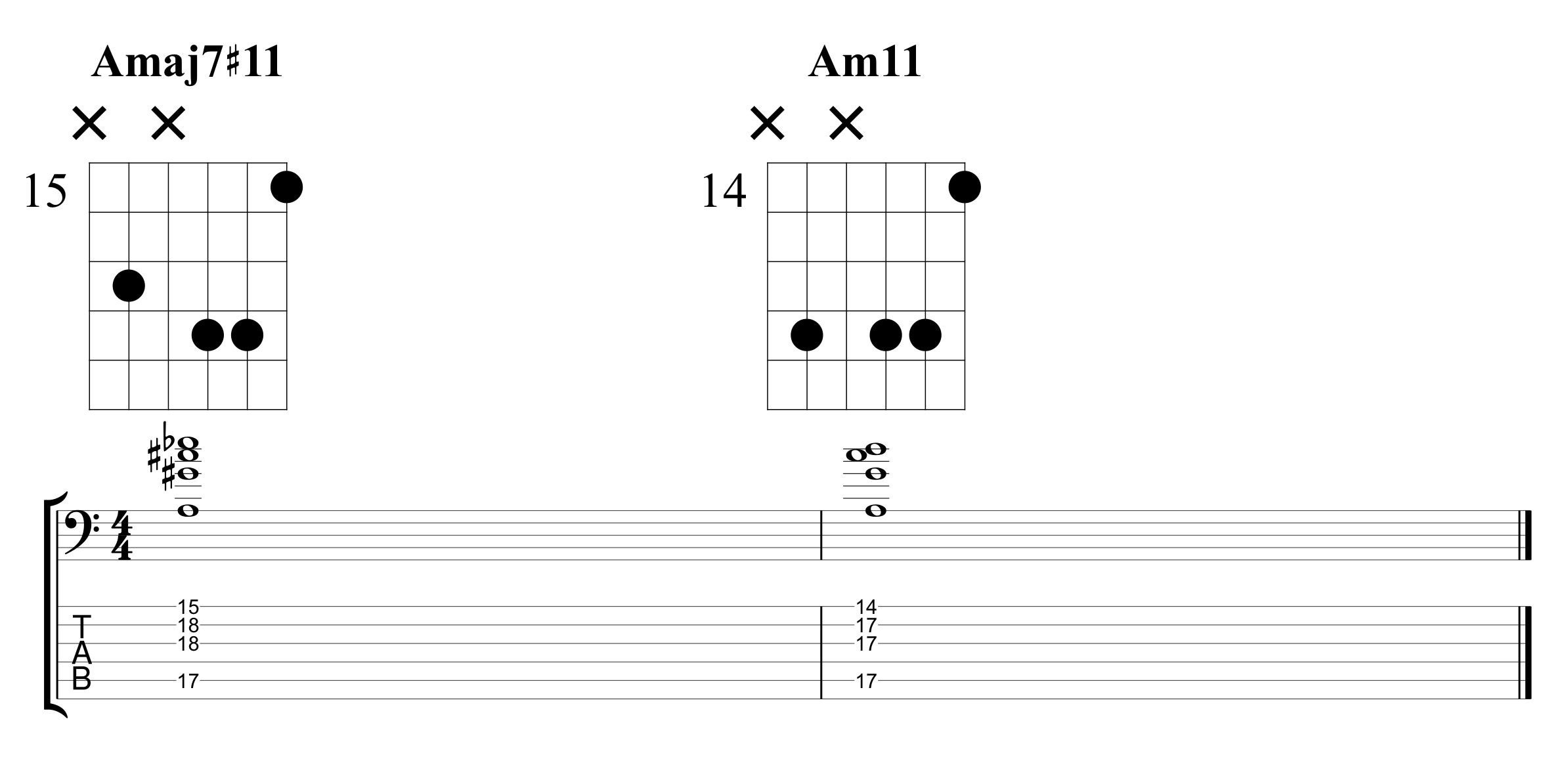
13th Chords
Finally I’m going to look at some voicings for 13th chords. The 13th is basically the same as a major 6th which is a note that can work on major, minor and dominant chords.
The voicings below are all dominant 13th chords. In each voicing the 13th is played as the highest note on the 1st string. It can be altered by flattening it as I’ve done in the second voicing. And, it can also be combined with the 9th, as I’ve done in the final voicing.
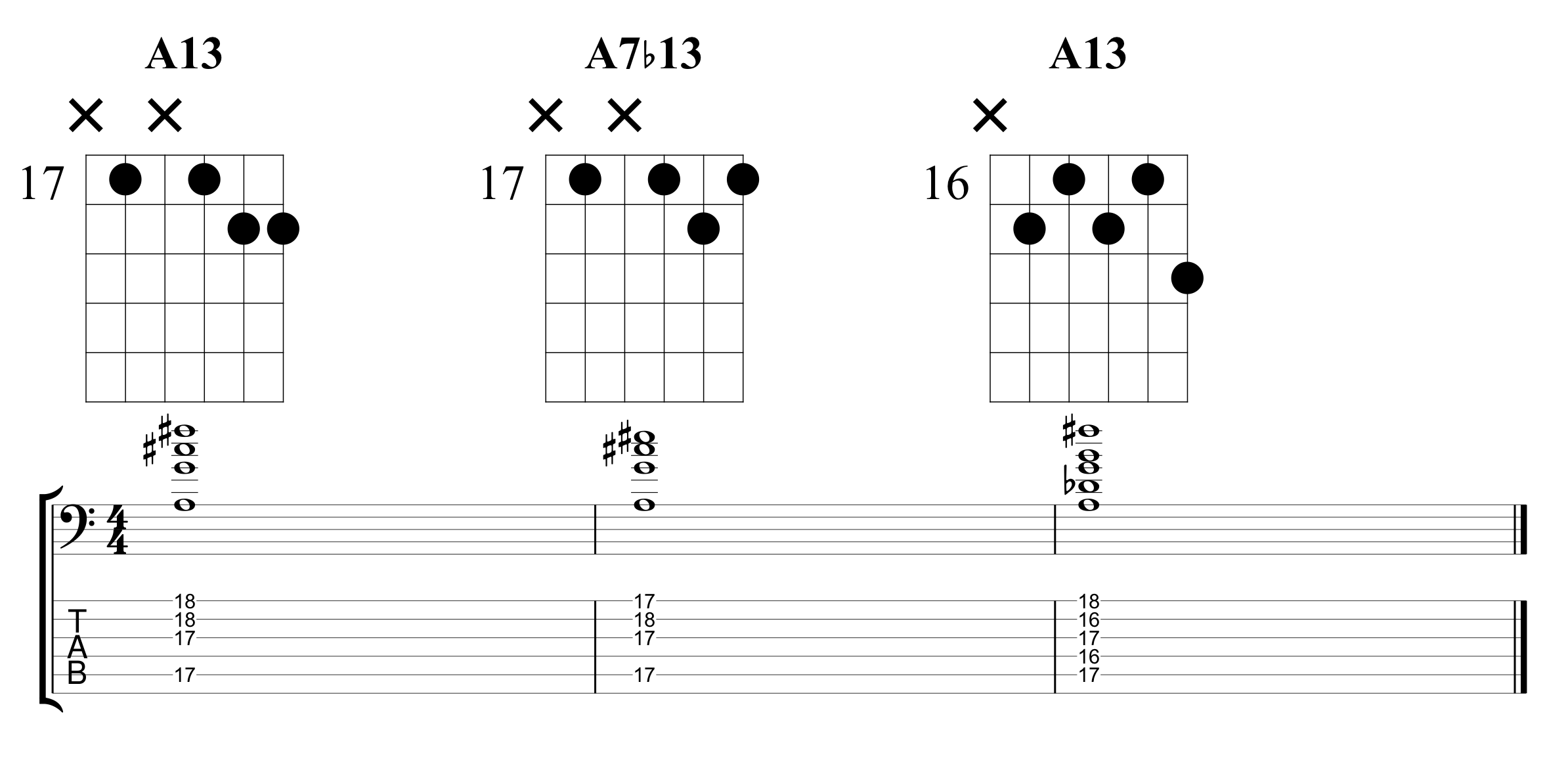
One big benefit of playing chord voicings on a 6 string bass is that you can play multiple chord extensions as I have in the final A13 voicing.

